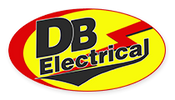People take great pride in their lawns and landscapes for both homes and businesses. If you have a large area to maintain, chances are you need more than simply a push mower. That’s when anyone tasked with lawncare may turn to a bigger machine like a riding mower or lawn tractor. Keeping those machines working well requires periodic inspection of key parts. By following a routine inspection calendar, you can keep your riding mower or lawn tractor working like new for years to come.
Here’s what to inspect on your mower or tractor:
1) Electrical Components: Electrical parts make the difference between fast and efficient starts or difficult starts. Smooth operation of your mower or tractor is also dependent on a well-functioning electrical system. The electrical system works on a similar principle as a chain. Any weak link can compromise the whole system. If you have difficulty starting or sluggish operation, check out the condition of electrical system components.
2) Belts: A belt that breaks will bring your mower or tractor to a halt, and it may cause further damage to your machine by the sudden disruption in power. Before an unexpected break happens, check your belts for any cracks, separation or glazing. These conditions are indicators of pending belt failure in the future.
3) Blades: Blades on a riding mower or tractor can take a lot of abuse from rocks, stumps and hardscape. Even if your blades never hit any of those objects, the mowing of turf will eventually dull your blades. You can sharpen your blades several times, but eventually looking at blade replacement is a good idea. Dull or damaged blades won’t cut turfgrass as cleanly as you’d like, and that will adversely affect the appearance of your lawn.
4) Fuel Parts: Mowers and tractors that run with internal combustion engines rely on efficient and measured delivery of fuel for smooth operation. Fuel systems eventually face two common problems: leaks and residue buildup. It’s wise to check the condition of your valves, fuel line, fuel filters, fuel pump and fuel tank – just to name a few components. Leaks leave telltale signs on the ground or pavement. Sluggish performance due to residue buildup is a little harder to determine, but hard starts and engine misfires are symptoms of fuel system problems.
5) Air filters: Periodically replacing your air filter is one of the simplest yet important things you can do to keep your riding mower or lawn tractor working at the top of its game. Air filters trap nasty particles that can cause problems later when they build up as residue. Once your air filter has done its job and become overloaded with residue, replace it with a new one.
6) Spark Plugs: Spark plugs are another one of those parts you should plan to periodically replace. New spark plugs can often rejuvenate quick starts and smoother operation overall. Replace spark plugs in a regular schedule.
7) Mufflers: Mufflers are most often thought of as a noise suppression component, but they also perform the important functions of reducing carbon emissions and lowering engine temperatures. If your muffler is dented, rusted or less capable of blocking noise, you should consider replacing it.
8) Oil: Replacing oil on a routine schedule is one of the best things you can do to prolong the life of your engine. As oil loads with particles and loses its viscosity, its ability to lubricate to lessen friction between engine parts diminishes. Fresh engine oil protects your engine from excessive friction. Keeping oil fresh is one of the best and smartest maintenance practices you can do.
Getting the most from your riding lawn mower or lawn tractor
When you take care of your lawn tractor or riding mower, it will be there to take care of your lawn care needs. A little maintenance work today will deliver reliable, long-term performance for many more tomorrows.
Related Articles
Choosing The Best Mower Blade For Your Lawn
What's The Best Choice In Lawn Mowers? Electric Or Gasoline


